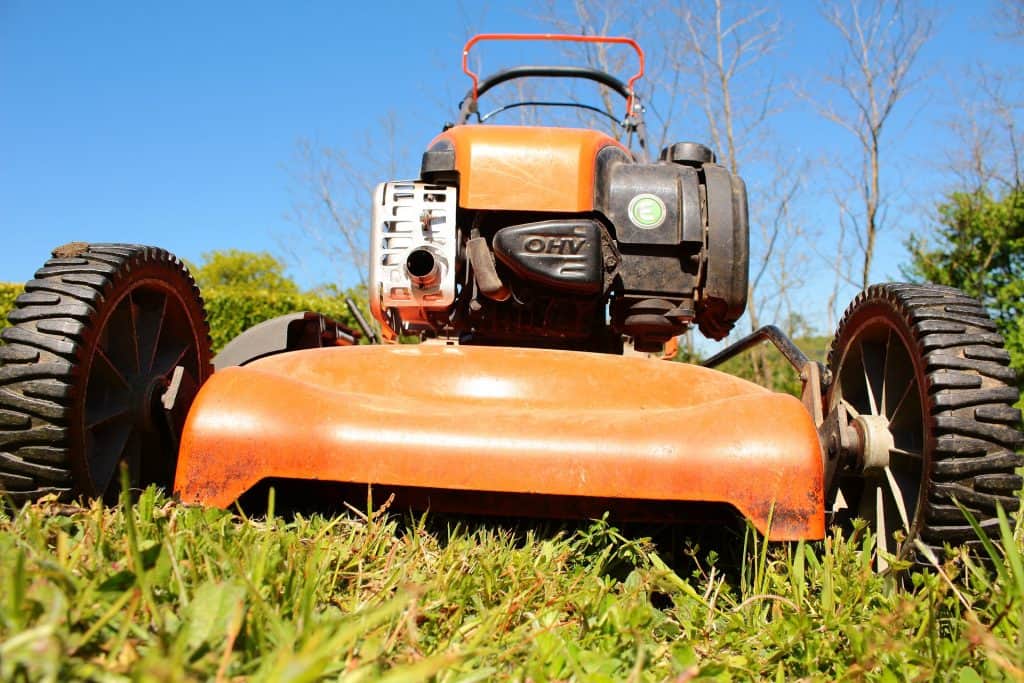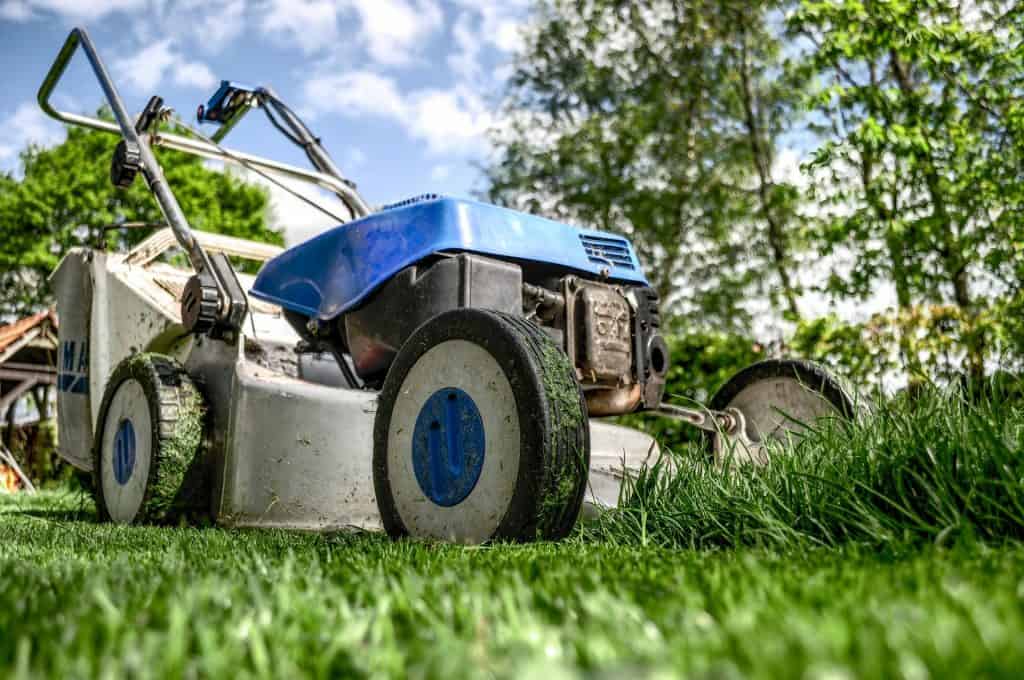Have you recently started to notice that your lawn mower blade isn’t ‘cut’ for the job anymore? Typically, that signifies that your blade needs to be sharpened. It can also indicate that you’re working with an unbalanced lawn mower blade.
An unbalanced blade has several negative effects on the life of your mower. If you want to make the most out of your power tool, make sure your blade is balanced when it feels off to you.
We’ll show you in easy steps how to balance a lawn mower blade.
What Causes a Lawn Mower Blade to Be Unbalanced?
Over time, your lawn mower blades get worn down from cutting your lawn. You should be making sure you’re using the right blade for your grass. For example, Spring time might necessitate a good mower blade designed for thick grass.

It typically isn’t the grass that causes wear and tear, but everything else that your blades might encounter in your yard.
Rocks, dirt chunks, sticks, branches… all of these things are not uncommon to end up on your grass, but they aren’t what a lawn mower is built to cut. When they come into contact with your blade, they can cause chipping and damage.
Beyond the impact damage, these elements cause different wear patterns on the blades. Over time, even the best lawn mower blades have to be balanced by sharpening them.
Why You Need to Balance Your Mowing Blades
An unbalanced blade will not prevent the lawn mower from working at all, but it will definitely hinder its performance. It’s also a far cheaper option than replacing your entire lawn mower (even cheap lawn mowers are several hundred dollars). There are several advantages of keeping your blade balanced:
- Prevent the lawn mower from shaking
- Prevents damage to the lawn mower’s compartments
- Uneven lawn when using the lawn mower
If you care about having a nice looking and freshly cut lawn, having balanced and sharpened blades might be the secret you’re missing.
Apart from not giving your lawn an equal cut, it could significantly damage the lawn mower itself. Unbalanced and high speed doesn’t sound like a great match. As the unbalanced blade spins thousands of times per minute, you’ll feel a vibrating sensation.
Lawn mowers are not supposed to vibrate! If you experience vibration, chances are you need to balance your blade.
The vibration shakes up the lawn mower’s compartments and has several negative effects. For the deck, the vibration causes the bolts to come loose which may dismantle the lawn mower.
Over time, the motor won’t hold up with excessive vibration either. Tackling an uneven blade helps to prevent future damage on your lawn mower.
How to Balance a Lawn Mower Blade

When a blade isn’t cutting grass like it’s intended to anymore, it means the blade is getting dull. To sharpen the blade you can use an angle grinder.
Working in an environment with scorching sparks flying around isn’t the safest environment. Make sure you’re well-prepared for the task. Safety glasses and thick gloves are a must.
- Sharpen the whole face of the angled edge on the blade.
- Keep sharpening until you reach the angled sloped. You don’t want to go any further, this increases the risk of damaging your blade and possibly hurting yourself.
- If there are any knicks or cracks go over the length of the blade’s edge again evenly.
It’s also best not to keep the blade in one place for too long. This will damage your blade severely and affect its function.
Sharpening the blade could cause one side to tip out of balance. After all, you’re taking away from the weight in order to sharpen the edges.
1. Remove the Blade from the Mower
Start by removing your lawn mower blade from the mowing unit. Depending on the model of mower you have, this could be quick and simple, or a little bit more of a lengthy process. Either way, it shouldn’t be overly difficult.
Most importantly, ensure that the mower isn’t plugged in while doing this – unplug your electric mower! If you are working on a battery operated lawn mower, make sure the battery has been removed.
2. Balance the Blade
Don’t overcomplicate this step – the basic need is that you have to hang the blade so that you can balance it.. A nail in the wall could work. Anything else that resembles a nail in the wall could work too. The best way to go is to use a blade balancer, preferably a magnetic one.
Just make sure your blade is centered and both ends are free to droop down. Once you’ve figured out what you’re going to use, hang the blade on the nail via the blade center.
3. Center the Blade
When you’ve got the blade perfectly centered, hold it in place for a few seconds. Then, gently let go of the blade. You don’t want your hands interfering with which way the blade is going to drop.

As you’ve probably guessed, the heavier side is going to go down. That’s the side you’re going to work on, as it is the “unbalanced” side of the blade.
4. Sharpen the Heavy Side
In order to balance the blade, you’ll want to sharpen the heavier side. This will remove tiny bits of the blade, allowing it to even out.
As if you’re sharpening your blade, you’re going to take a little bit off the heavy side. You won’t always get it right on the first try, typically.
Hang up the blade again and observe the balance. You may have removed too little or too much of that side. Keep working your blade until it is even as it hangs.
We recommend using an angle grinder to sharpen your mower blades.
5. Put the Blade Back on the Mower
When your blade is balanced and sharpened, you should take it out on a test run. Attach the blade back on and tighten the bolt with a wrench firmly. Put the wires back in place then you’re ready to start mowing again.
Bear in mind that you don’t have to remove the blade to sharpen it, but you do have to remove it in order to balance it.
What Causes a Lawn Mower to Shake
Lawn mowers tend to slightly vibrate when in use. However, when the shaking intensifies this signifies a problem. Cheaper lawn mowers will develop this problem more frequently, but all mowers are vulnerable to it over time.
There are several reasons that cause your lawn mower to start vibrating and shaking, and only one of them is due to unbalanced blades.
Debris on the Blade
Clumps of grass, mud, or clay may get stuck to one side of the blade, but not the other. That awkwardly shifts the weight to one side, causing the lawn mower to shake.
This can also be the case if you use your mower for hills frequently, as that can put strain on your blades as they gather dirt and debris.
This is the best-case scenario when your mower is vibrating. An easy wipe of all the accumulated mud and grass is enough to get your lawn mower up and running.

Loose Mount or Crankshaft
The constant cutting of a mower can sometimes cause screws and bolts to come loose. That’s why it’s very important to have regular check-ups for your lawn mower and ensure everything is securely fastened in place.
If you neglect to do so for a long period of time, the mount and crankshaft can become loose and need tightening.
Damaged Lawn Mower Blade
A blade that is damaged vs unbalanced are two very different things. At least when you know your blade is unbalanced you could easily fix it. A broken or damaged blade, on the other hand, isn’t as easy to fix.
Broken parts, dents, and cracks are all signs that the blade is getting old and needs to be replaced. They won’t only cause the lawn mower to shake violently, but may also stop it entirely. An unbalanced lawn mower is dangerous as it is, imagine what a damaged one would do.
Wrap Up
An unbalanced lawn mower shouldn’t be brushed off as an unimportant matter. People could get hurt while operating a shaking lawn mower.
To recap quickly, there isn’t a set number of steps to balance a lawn mower blade. There may be more or less than five steps This would depend on your precision in scraping off the metal, in addition to the current state of the blades.
It all essentially comes down to two main actions: balancing and scraping. This is probably one of the easiest things to fix when it comes to lawn mowers.